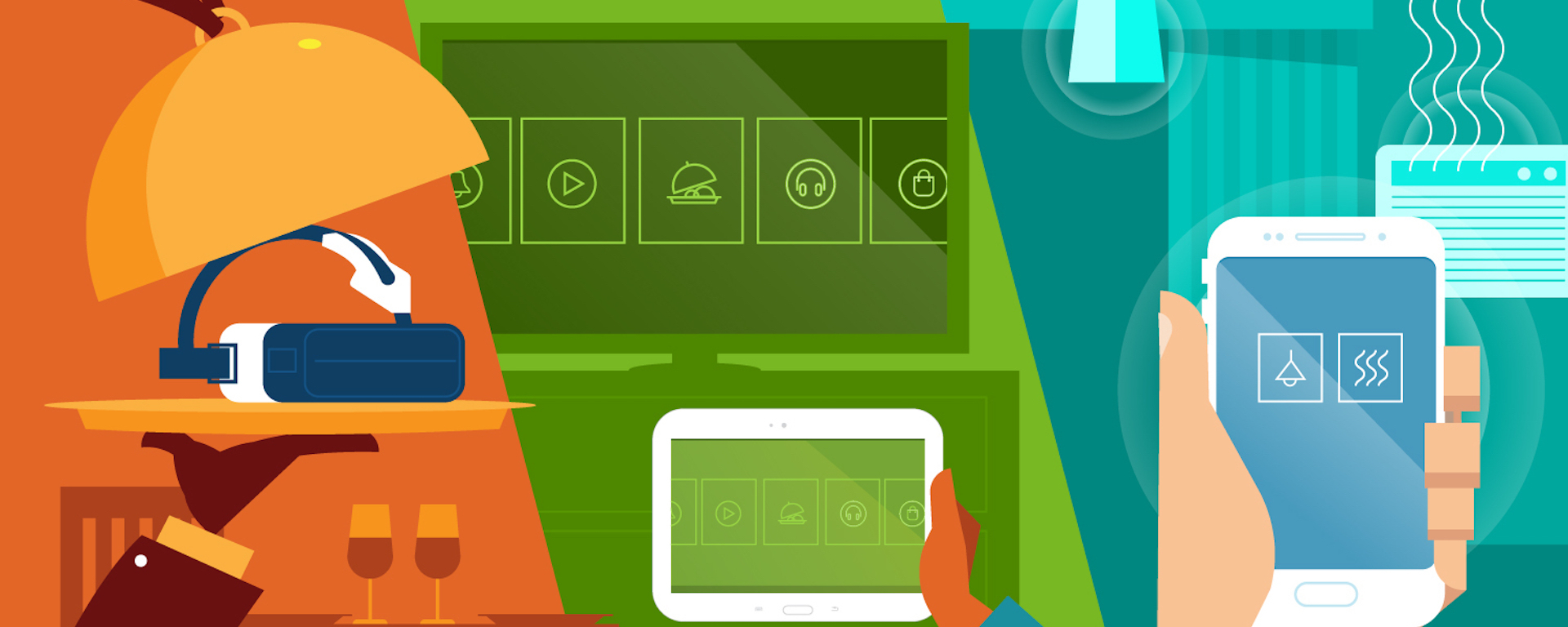In 2015, the hospitality industry focused on improving the customer experience using hotel in-room technology. With many guests now living in connected homes, hotels realized that to keep customers satisfied, the hotel experience must provide at least the same level of technology that guests enjoy in their own homes. Hotels are also now beginning to take full advantage of mobile devices to create a customer-focused experience from the moment guests step onto the property until the end of their stay.
Here are the top three hospitality technology trends we saw in 2015.
Connected Hotel Rooms
Thanks to new hotel in-room technology, the guest room will never be the same. Instead of an impersonal space in which to sleep, hotel rooms are now designed to anticipate guests’ needs and create a personalized experience. A 2015 survey conducted by Hotel Management on behalf of Samsung Business found that in the next 18 months, more than 20 percent of hotels plan to integrate smart guest room features, including lighting and drapery that automatically adjusts based on guests’ preferences.
Guests can also use mobile devices to control the lighting and temperature in the room without ever having to leave the bed. At the SLS Las Vegas, guests perform various tasks from in-room smart televisions, including arranging for laundry pickup, calling for the valet to have their car ready or checking out of the hotel. Smart televisions also allow hotel staff to automatically personalize the content in the guest’s preferred language.
Smart Televisions
Many hotels upgraded to smart televisions in 2015. The guest room television serves as the center of entertainment and automation in the next-generation guest room. Hotels without this feature will soon find themselves behind the competition in their ability to provide a top-notch guest experience, both in terms of technology and personalization.
Since many travelers have their own content on their mobile devices, Huntington Hotel Group properties in San Jose, California, use screen mirror technology so that guests can watch their own content as well as their own premium subscriptions on the guest room television. Smart television sets also allow hotel staff to personalize the premium content offered based on guest data and preferences.
Virtual Reality in Restaurants
Virtual reality in hospitality emerged on the scene with virtual reality gear now becoming affordable and the technology less complex. The most notable example is the virtual reality dinner service by Sublimotion, in partnership with award-winning chef Paco Roncero. During the lavish dinner at the Hard Rock Hotel Ibiza, guests wear Samsung Gear VR to experience various sensory experiences, including being underwater and in a Tuscan garden.
Hotel restaurant operators can incorporate the same concept of virtual reality to enhance the overall meal. Instead of multiple scenes and extravagant effects, restaurants can use virtual reality for a specific course or for one scene throughout the meal. Diners can feel as though they’re eating their pasta in a piazza in Italy by setting the scene, adding street musicians to play music and even the light scent of flowers coming from the portico above.
As 2015 winds down, it’s time to turn our attention to 2016 and what’s next for hospitality technology. The most important question for hotels to ask as the new year kicks off is how they can use new in-room technology to create a personalized and unique experience for each guest. It’s not simply having the technology that makes the difference in the bottom line and guest satisfaction — it’s what you do with it.

